That old army coat

Early next year I’m planning to make a zero waste coat. I plan these things ahead: a few zero waste layouts are rolling around in my head, I’ve found/bought fabric for samples (despite the number of sheep here, it’s not easy to buy wool coating in Australia in January) and I’m considering the garment details….and suddenly my eyes have become attuned to coat details!
We have in our house an old army coat. It’s not a thing that’s been passed through our family – Mr Haywood bought it somewhere about 10 years ago.
He thought it was from the Korean war but it’s too young. The label says 1967, so it’s more Vietnam war era, but no-one wore heavy wool coats in tropical ‘Nam! The coat was made in Victoria, Australia.
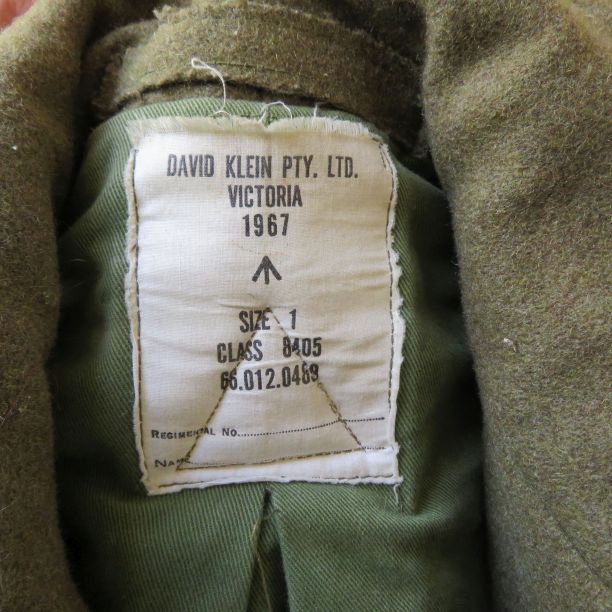
The coat is a fairly small size. It’s too small for him but our 12 year old discovered it fitted her (and of course it looked fabulous on her). It also fits me.

The coat has some neat design features that caught my eye. I thought I’d share them with you…
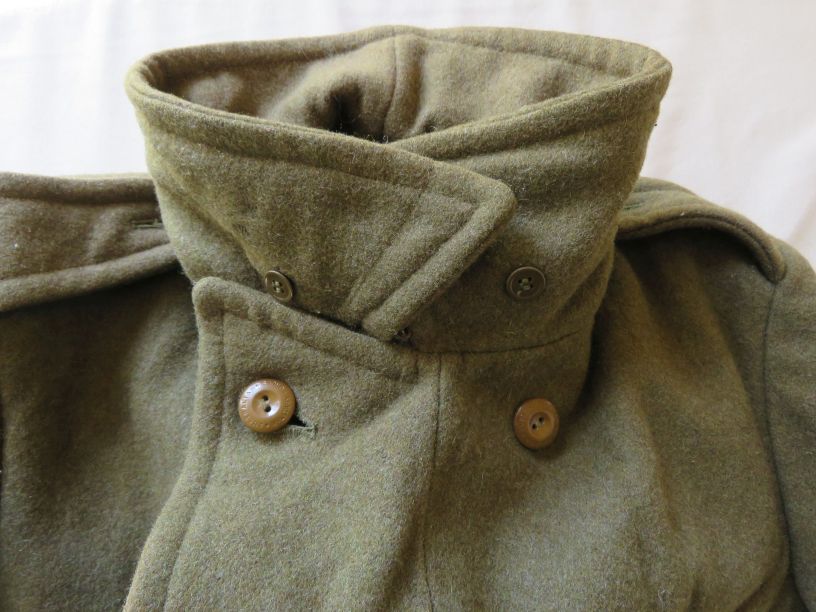
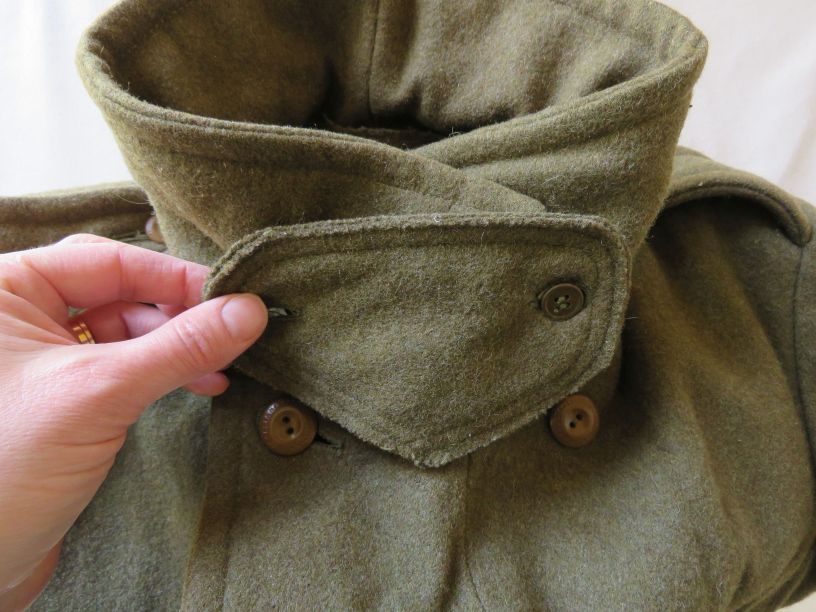

You might have noticed the fabric. It’s been fulled so thoroughly that it doesn’t fray at all – something you don’t see too often now. It has raw edges left throughout.
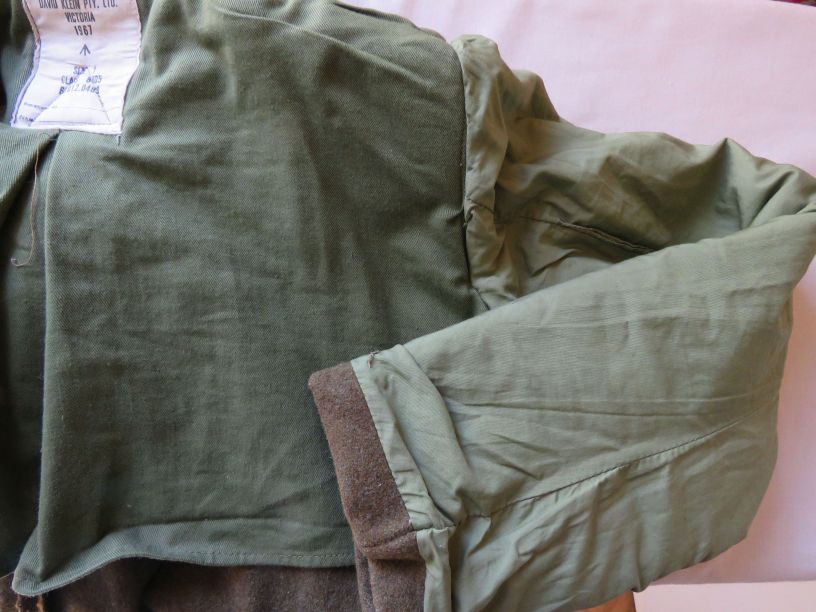
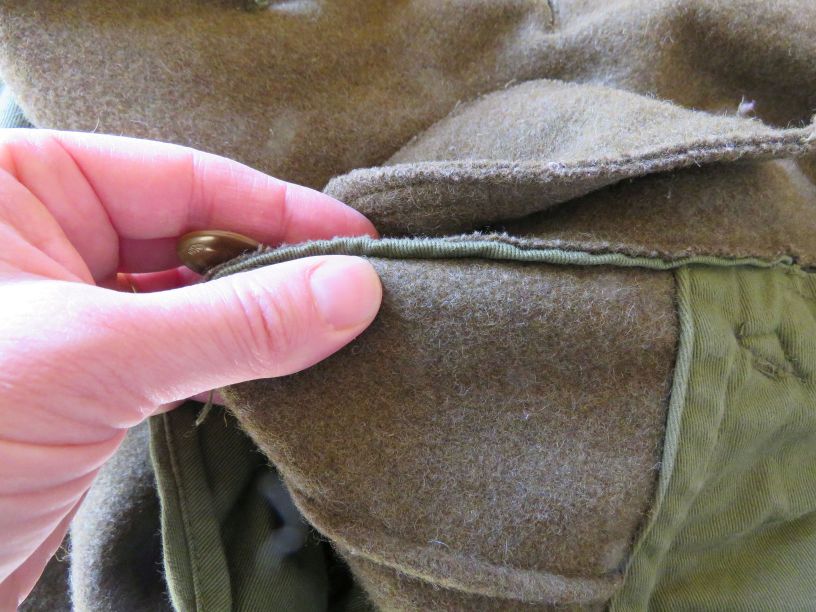
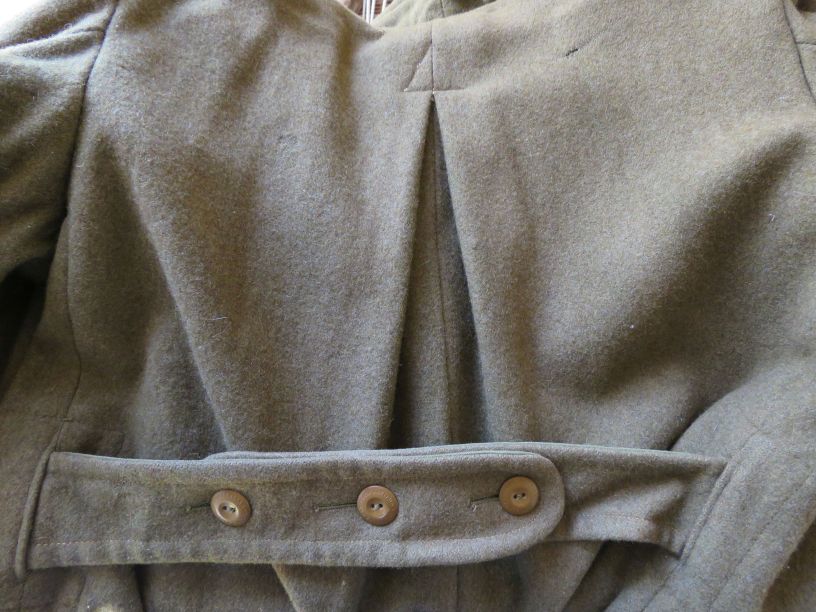
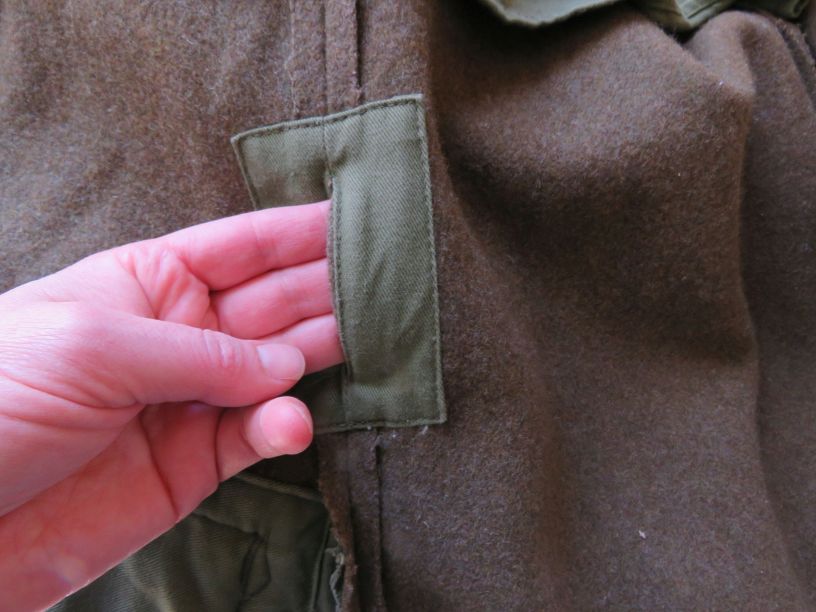
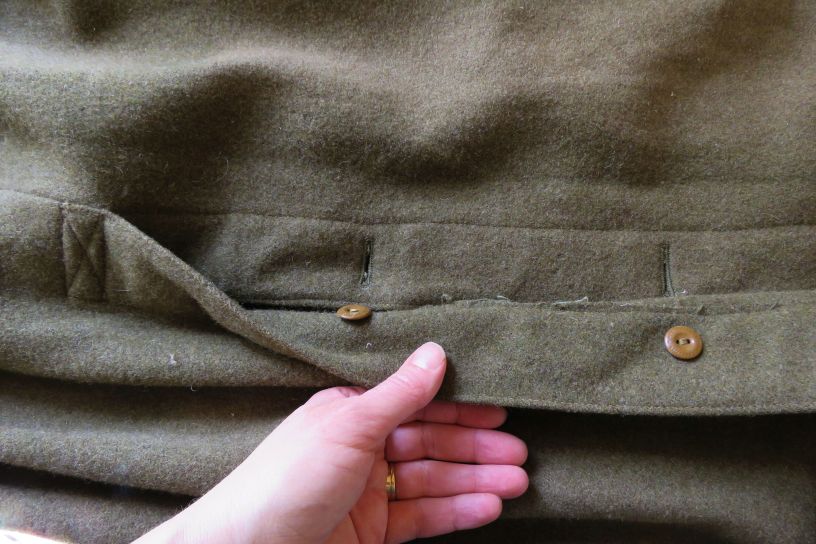
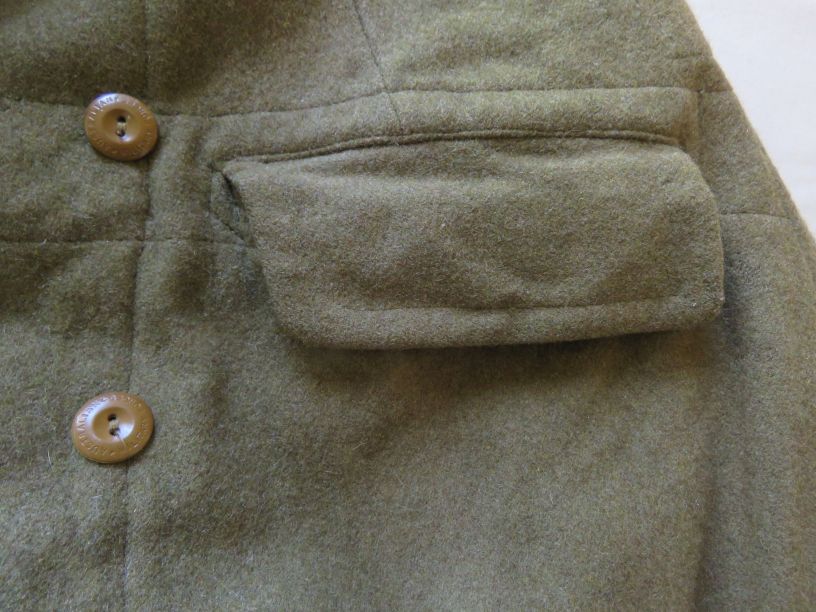

I wonder if anyone wore this army coat? There’s no name in it. It has a few little moth holes and a bit of fraying on the label, but otherwise is in excellent condition for a 54 year old coat.
Cheers!
So interesting to see details such as this. Thank you for taking the time to share them.
Cheers, Carol – glad other people find these things interesting too.
I have a black David Klein PTY LTD 1967 class 8405,66.012.0496, no holes perfect condition,heavy,but would love to find out more about it I was wondering if anyone could help me with that please,on the inside it also has lined material but green across the top of the back from shoulder to shoulder,and the pockets are also green,it has brown buttons.
Hi Linda, I hope you can get some help with it. When I wrote this post I could only find similar coats on ebay, but I’ve since discovered two very similar David Klein coats in museums: at Redland Museum in QLD and an almost identical one on Victorian Collections. Maybe the museum curators might know more? Best wishes with it.
Hi Liz. Bill graduated from the Army Apprentice School at Balcombe, Victoria a few weeks after you were born – I’ll bet the apprentices all had one of those!
I’d forgotten about that – yes, it’s his era. It would fit D now! Thanks Mum 🙂
Hi Liz and thank you for a very interesting post. Just wondered what you meant by the fabric being ‘fulled’ so it doesn’t fray?
Hi Denise, fulling is something they do to fabric after weaving it. I’m no expert, but handweavers know about it. I understand it’s kind of like felting; it shrinks the threads together. https://fashion-history.lovetoknow.com/fabrics-fibers/fulling
As you know, felt doesn’t fray, and the army coat’s fabric is almost like felt even though it’s woven. If you have an opportunity to look at coats made a long time ago (eg US Civil war era, Regency etc) sometimes the front and lower edges are raw – the fabric is so dense and fulled so thoroughly that the tailor just left them. There’s one example here: https://augusta-auction.com/search-past-sales?view=lot&id=4826&auction_file_id=8
What an amazing number of design details in this coat. My brain can’t help thinking what could be incorporated in general sewing construction. The different fabrics for lining to accommodate the use of each piece, the buttonholes on the back vent, and the really well made pockets. If anything is going to wear out first on any of my husband’s clothes it will be the pockets! No matter where they are located. Maybe we tend to put pockets on almost as an afterthought, saying how practical they are, or how good they look, but not really giving them the consideration for the hard work they do. I will have to think about this.
Thank you for such an interesting post.
Military clothes of any era are just fascinating, Sara. They’re “everything you need and nothing you don’t” and always have clever, practical details.
The pockets on this coat are so strongly constructed – you can see the backing is stitched around the top and sides of the opening.
Ten years after this coat was made a friend of mine bought a Bluey (navy fulled wool jacket sold as work wear) to wear on her trip to Europe between high school and uni.
They were legendarily impervious to wind and rain.
An excellent choice for a trip. I wonder if anyone makes them like this now?
I love my army greatcoat. Best op-shop find ever! It’s nice and long, well below my knees. I’m wearing it now in my freezing office. These old Army coats were an Aussie Disposals staple back in the 90’s. They used to overdye some black, that probably explains one of the above posts.
I’ve always wondered about the little metal clasp in the lapel. I guess it’s to hold the lapels together before attaching the throat latch.
I’ve had Blueys, bush-shirts, 70’s lumber jackets and assorted other cold weather gear but I always come back to that old army coat.
Agree, they are beaut for warmth, and I haven’t seen any modern day coats with such good quality fabric and thoughtful construction.
Thanks for the link to your blog archive! Love the construction of the collar and the throat shield. I get a lot of problems with my throat and chest in winter- if I ever sew a coat I would think about how to corporate that detail. Also wondering if this ultimately led to the Optimatium pattern?? Or did that start out differently?
It’s a superb collar, isn’t it? I think the throat latch is a good detail that doesn’t seem to be used much.
The coat I had in mind is still on hold (it’s at the bottom of this post: https://lizhaywood.com.au/finishing-those-ufos/) but I’ve since made a coat with Optimatium as you know.
The Australian Army greatcoats detailed here were an issue item to soldiers and other military personnel during the 1960s althugh greatcoats of a different pattern and cut (1946 version) were worn by soldiers durin gthe Korean War and even earlier. World War 1 era photographs show Australian soldiers wearing greatcoats – a single row of buttons for other ranks and adouble row of buttons for officers. When I joined the Australian Army Reserve in 1980 I was issued with a 1967 dated greatcoat. I believe they were issued up until the early 1990s which is why they can be seen in op shops today
Thanks for this fascinating info, Kim. Quite amazing that they kept the same design for so long.
When I joined 6 Field Ambulance, an Australian Army Reserve Forces unit in February 1980, I was intrigued to see 1967 as the year of manufacture on my issue greatcoat. I asked around my mates who told me they too had received a greatcoat but the only time they ever wore it was during Annual Camp as it wasn’t recommended for weekly parades in winter – I still have my issue greatcoat plus a few more from various op shops – amazing what you can find in op shops these days!